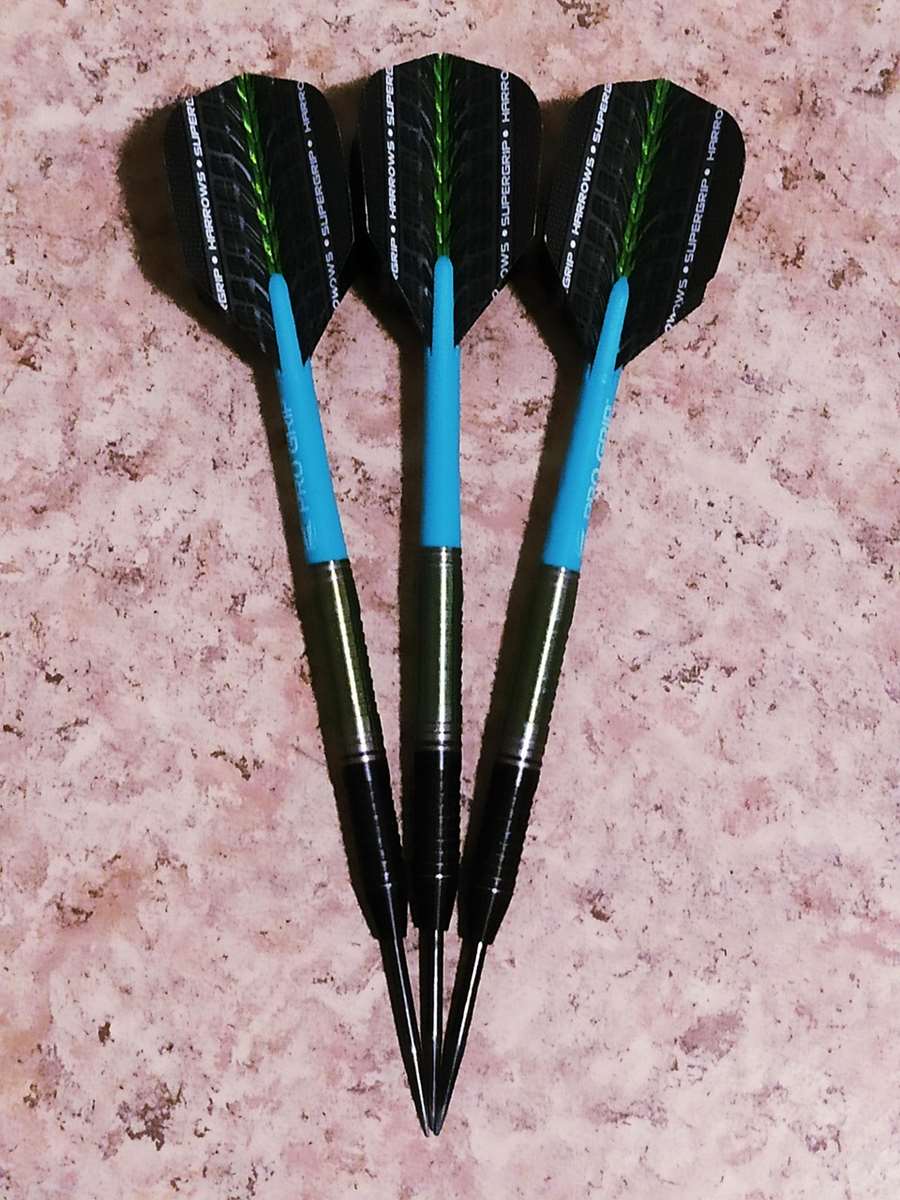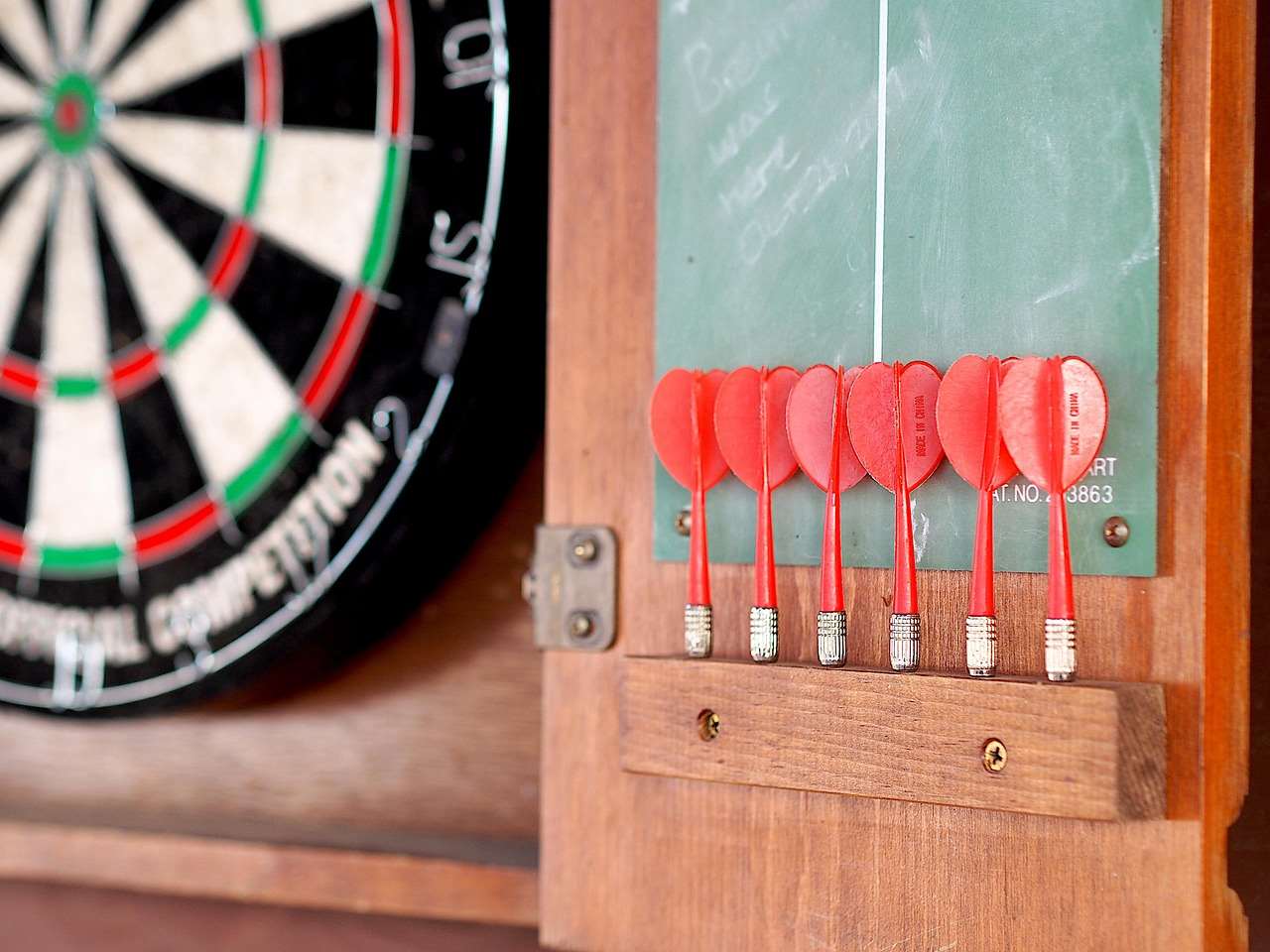Want to make your darts night scoring methods easy? Forget complicated calculations! This article breaks down the most popular and straightforward scoring systems, like 501, Cricket, and Around the World, so you can focus on throwing those perfect darts. We’ll also cover helpful tips for keeping score, different variations, and strategies to impress your friends at your next darts night.
⚠️ Still Using Pen & Paper (or a Chalkboard)?! ⚠️
Step into the future! The Dart Counter App handles all the scoring, suggests checkouts, and tracks your stats automatically. It's easier than you think!
Try the Smart Dart Counter App FREE!Ready for an upgrade? Click above!
Keeping Track: Essential Darts Night Scoring Methods Easy to Master
Before diving into specific games, let’s cover the basics of keeping score. Accuracy is key, as a miscalculated score can lead to confusion and potentially cost you the game. A simple whiteboard or a notepad and pen are the most common and reliable tools. A dedicated darts scorer app can also be helpful, especially for more complex games or tournaments, but understanding manual scoring is essential. You could also delve into the history of darts games uk.
Essential Scoring Tools
- Whiteboard or Notepad: A clear and easily erasable surface for writing down scores.
- Marker or Pen: Choose a color that’s easy to read.
- Calculator (Optional): Helpful for quickly calculating subtractions, especially in 501.
- Darts Scorer App (Optional): Streamlines scoring and often provides game statistics.

For team games, designate one person as the scorer for each team. This helps maintain consistency and avoids disagreements. When recording scores, clearly indicate each player’s name or initials next to their running total. Remember to deduct each throw from the remaining score. For example, in 501, if a player throws a score of 60 on their first turn, their remaining score is 441.
The King of the Darts Board: 501 Scoring Demystified
The most popular game in darts, 501 is the go-to choice for many darts night scoring methods easy to learn and enjoy. The goal is simple: be the first player to reduce your score from 501 to exactly zero. There’s a catch, though: you must finish on a double. This means the final dart thrown must land in a double segment of the dartboard. Knowing your outs is key. This makes 501 a great way to test your Darts Variants Fun Games skills.
501 Scoring: Step-by-Step
- Start with 501: Each player begins with a score of 501.
- Take Turns Throwing: Players take turns throwing three darts per round.
- Calculate and Deduct: After each round, calculate the total score for the three darts and subtract it from the player’s remaining score.
- Bust Rule: If a player’s score goes below zero, or if they fail to finish on a double, it’s a “bust.” Their score returns to what it was at the beginning of that round.
- Finish on a Double: The winning dart must land in a double segment. For example, if you need 20 to win, you must hit double 10.

Strategic Tip: Planning your outs is crucial. As you approach the end of the game, start setting up shots that leave you with a manageable double. Common outs include double 16 (32), double 20 (40), and double 10 (20). Don’t be afraid to play defensively, especially against a skilled opponent. Consider leaving yourself a score that forces your opponent into a difficult out.
Conquer the Board: Cricket Scoring Explained Simply
Cricket is another widely popular darts game known for its strategic gameplay. Unlike 501, which focuses on reducing a score to zero, Cricket involves “closing” numbers on the board. This scoring system is different from the ones you’ll find in some ancient dart throwing games. The goal is to be the first player to close all the required numbers (typically 20, 19, 18, 17, 16, 15, and the bullseye) and have a higher or equal score than your opponent.
Cricket Scoring: Breaking It Down
- Select Numbers: Choose which numbers you’ll play (usually 20, 19, 18, 17, 16, 15, and the bullseye).
- Open a Number: To open a number, you must hit it three times. These can be single, double, or triple hits.
- Score on Open Numbers: Once a number is open, you score points each time you hit it, as long as your opponent hasn’t closed it.
- Close a Number: To close a number, you must hit it three times after it’s been opened.
- Winning: The first player to close all the required numbers and have a higher or equal score wins.

Strategic Tip: In Cricket, focus on opening and closing numbers efficiently. Prioritize opening high-scoring numbers like 20 and 19 early in the game. Play defensively by closing numbers your opponent needs to score. Pay attention to your opponent’s score and focus on maximizing your points while preventing them from scoring.
Around the World: A Fun and Progressive Darts Night Scoring Methods Easy Option
Around the World (also known as Round the Clock) is a simple yet engaging game perfect for beginners or for warming up before a more competitive match. The objective is to hit each number on the dartboard in sequence, starting with 1 and ending with 20. There’s a variation where you must also finish on the bullseye to win.
Around the World Scoring: Simple Progression
- Start at 1: Begin by aiming for the number 1.
- Progress Sequentially: Once you hit the number 1, move on to 2, then 3, and so on.
- Single, Double, or Triple: Any hit on the correct number counts, whether it’s a single, double, or triple.
- First to 20 (or Bullseye): The first player to hit all numbers from 1 to 20 (and optionally the bullseye) wins.
Strategic Tip: Around the World is a great game for practicing your accuracy and consistency. Focus on hitting the center of each number. This game can be adapted to different skill levels by requiring players to hit doubles or triples instead of just singles. This is one of the simplest of the darts night scoring methods easy to adapt.

Other Darts Night Scoring Methods Easy and Fun Variations
Beyond the standard games, there are many other exciting and easy-to-learn darts games that can spice up your darts night. These variations often involve different scoring systems and strategic elements, making them a great way to challenge yourself and your friends.
Popular Darts Game Variations:
- Killer: Each player is assigned a number. To become a “killer,” you must hit your number three times. Once a killer, you can target other players’ numbers to reduce their lives. The last player with lives remaining wins.
- Shanghai: Players aim to score the highest possible points on each number from 1 to 7 in successive rounds. Hitting a single, double, and triple of the target number in the same round (a “Shanghai”) automatically wins the game.
- Golf: Each player attempts to complete each hole (number) in the fewest darts possible. The player with the lowest total score after nine or 18 holes wins.
Tips for a Smooth and Enjoyable Darts Night
Beyond knowing the darts night scoring methods easy to understand, here are some tips to ensure your darts night runs smoothly and is enjoyable for everyone involved:
- Clearly Define the Rules: Before starting any game, make sure all players understand the rules and scoring system.
- Designate a Scorer: Assign a dedicated scorer to minimize errors and disputes.
- Maintain a Positive Atmosphere: Encourage friendly competition and good sportsmanship.
- Take Breaks: Allow for breaks between games to socialize and relax.
- Provide Refreshments: Keep snacks and drinks on hand to keep everyone energized.

By mastering these darts night scoring methods easy and following these tips, you’ll be well-equipped to host a fun and successful darts night for your friends. Remember to practice regularly to improve your accuracy and strategy. Happy darting!
Troubleshooting Common Scoring Problems
Even with the best intentions, scoring errors can sometimes occur. Here’s how to handle common scoring issues:
- Miscalculated Scores: Double-check the score before deducting it from the player’s total. Use a calculator if needed.
- Disagreements on Scores: If there’s a disagreement, review the throw together and try to reach a consensus. If necessary, replay the throw.
- “Bust” Disputes: Clearly explain the “bust” rule before the game starts to avoid confusion.
Having easy and fair darts night scoring methods easy will ensure everyone has a good time.
Conclusion: Your Path to Darts Night Mastery
By understanding these darts night scoring methods easy, you are well on your way to hosting epic darts nights. We covered the essentials of 501, Cricket, and Around the World, along with helpful tips for accurate scoring and fun variations to keep things interesting. Now it’s time to grab your darts, gather your friends, and put your newfound knowledge into practice! Whether you’re a seasoned pro or a complete beginner, darts is a game that can be enjoyed by everyone. Now that you know how to keep score, explore some forgotten pub dart games. So get out there, aim for the bullseye, and most importantly, have fun!
Hi, I’m Dieter, and I created Dartcounter (Dartcounterapp.com). My motivation wasn’t being a darts expert – quite the opposite! When I first started playing, I loved the game but found keeping accurate scores and tracking stats difficult and distracting.
I figured I couldn’t be the only one struggling with this. So, I decided to build a solution: an easy-to-use application that everyone, no matter their experience level, could use to manage scoring effortlessly.
My goal for Dartcounter was simple: let the app handle the numbers – the scoring, the averages, the stats, even checkout suggestions – so players could focus purely on their throw and enjoying the game. It began as a way to solve my own beginner’s problem, and I’m thrilled it has grown into a helpful tool for the wider darts community.